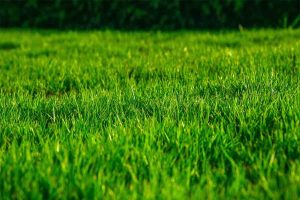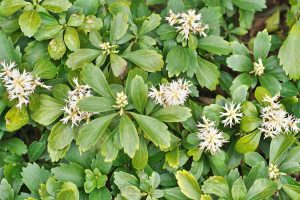
Spring’s arrival signifies a time for renewal, and that includes your lawn! After enduring the winter elements, your grass might be looking a little worse for wear. But fear not, with some springtime TLC, you can prime your lawn for a vibrant and healthy summer season. This guide provides essential spring maintenance tips for both novice and seasoned lawn care enthusiasts, ensuring your yard becomes the envy of the neighborhood.
Spring Cleaning for Your Lawn
Just like tidying up your house after a long winter, your lawn needs a good cleaning too. Rake away any accumulated leaves, twigs, and debris that might have settled over the colder months. This allows sunlight and air to reach the grass, promoting healthy growth. Additionally, removing debris helps prevent the growth of disease and fungus.
Sharpen Up Your Mowing Arsenal
Before the vigorous summer growth kicks in, ensure your lawn mower is in top shape. Sharpen the mower blade for a clean cut that promotes healthy growth and prevents ragged edges. Here’s a pro tip: consider getting your mower blade professionally sharpened for optimal performance.
Related: Which Florida Grass Types are Good for Sandy Lawns
Aerate for a Breath of Fresh Air (and Water!)
Compacted soil can hinder air, water, and nutrient flow to your grassroots. Aeration involves creating small holes in the ground, allowing these essential elements to reach the roots more effectively. This process is particularly beneficial for clay or heavily trafficked lawns. You can use a core aerator (available for rent at most garden centers) or a simple spiking tool for smaller areas.
Nourish Your Lawn with Spring Fertilizer
Think of spring fertilizer as a wake-up call for your lawn after its winter slumber. Apply a balanced fertilizer following the instructions on the package. Remember, a little goes a long way – over-fertilizing can damage your grass and pollute waterways. Opt for slow-release fertilizers that provide nutrients gradually throughout the growing season.
Wage War on Early Weeds
Weeds are persistent lawn invaders. To prevent them from stealing valuable resources from your grass, apply a pre-emergent herbicide in early spring. This proactive approach stops weed seeds from germinating in the first place. For existing weeds, spot-treat them with a selective herbicide that targets weeds without harming your grass.
Dealing with Bare Patches? Seeding is the Answer
If your lawn has bare patches due to winter damage or heavy traffic, spring is the perfect time for overseeding. Core aerate the bare areas first, then rake the soil lightly to create a good seedbed. Choose a grass seed variety suitable for your climate and spread it evenly. Keep the seeded area consistently moist for germination, and soon you’ll see a healthy patch of new grass filling in the gaps.
Bonus Tip: Watering Wisely
While regular watering is crucial for a healthy lawn, avoid overwatering. Deep watering less frequently encourages roots to grow deeper, making your lawn more resilient during dry spells. Early morning watering allows the grass to absorb moisture before the heat of the day, reducing evaporation.
Related: How Do I Identify Florida Grass?
By following these spring maintenance tips, you’ll be well on your way to achieving a lush, green lawn that thrives throughout the summer. Remember, a healthy lawn not only enhances your curb appeal but also provides a cool green space for you and your family to enjoy!
Spring Lawn Care FAQs: Your Questions Answered!
Spring is prime time to get your lawn in tip-top shape for the summer season. Here are some answers to frequently asked questions to guide you through your spring lawn care routine:
Mowing:
- How often should I mow my lawn in spring?
- You can gradually increase mowing frequency as the grass starts growing actively in spring. Aim to remove no more than one-third of the grass blade height at each mow.
- Should I bag my grass clippings?
- Bagging can be necessary for very heavy clippings, but generally, leaving clippings on the lawn returns nutrients to the soil. Opt for mulching mowers that chop clippings into finer pieces for better decomposition.
Watering:
- How much should I water my lawn in spring?
- Watering needs vary depending on your climate and soil type. Water deeply and infrequently, allowing the water to penetrate the roots. Early morning watering is ideal to minimize evaporation.
- Should I water my lawn every day?
- Daily watering is generally not necessary. Aim to water when the top inch of soil feels dry to the touch. Encourage deeper root growth by watering thoroughly less often.
Fertilizing:
- What type of fertilizer should I use in spring?
- Choose a balanced fertilizer formulated for your specific grass type and climate. Opt for slow-release fertilizers that provide nutrients gradually throughout the growing season.
- When is the best time to fertilize my lawn?
- Apply fertilizer according to the manufacturer’s instructions, typically in early spring when the grass starts to green up. Avoid fertilizing during hot, dry periods.
Weeds and Pests:
- How can I prevent weeds in spring?
- Apply a pre-emergent herbicide in early spring to stop weed seeds from germinating. For existing weeds, use a selective herbicide that targets weeds without harming your grass.
- What are some natural ways to control lawn pests?
- Encourage beneficial insects like ladybugs and lacewings that prey on harmful pests. Consider using natural pest control methods like insecticidal soap or neem oil for targeted pest control.
Thatch and Aeration:
- What is thatch, and how do I know if my lawn needs aeration?
- Thatch is a layer of dead grass material that accumulates between the soil surface and the grass blades. Aeration involves creating holes in the ground to improve air, water, and nutrient flow to the roots. Signs your lawn might need aeration include compacted soil, excessive thatch buildup, and poor water drainage.
Remember, these are general guidelines. Always refer to the specific needs of your grass type and local climate for optimal lawn care results.





